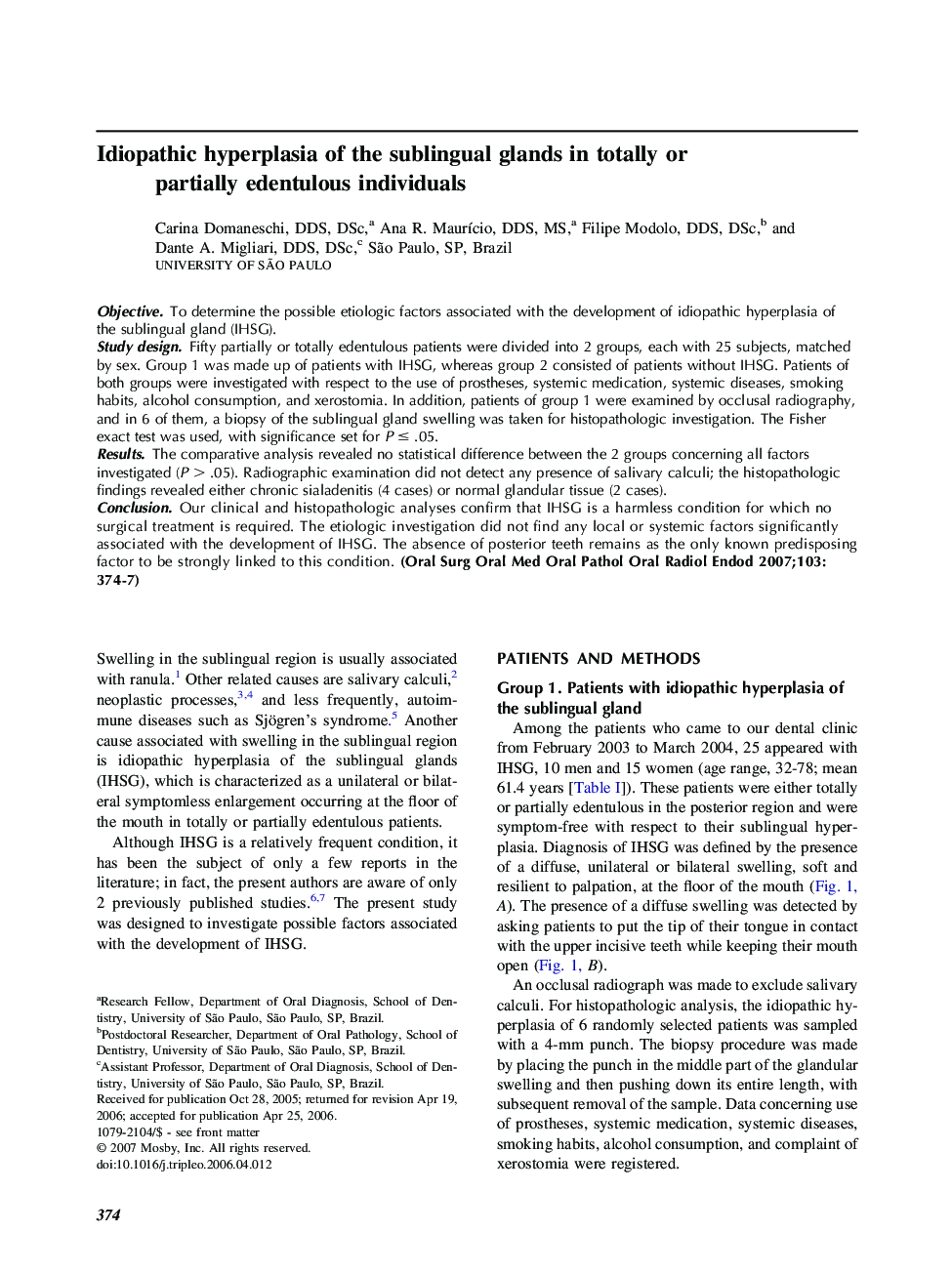| Article ID | Journal | Published Year | Pages | File Type |
|---|---|---|---|---|
| 3169524 | Oral Surgery, Oral Medicine, Oral Pathology, Oral Radiology, and Endodontology | 2007 | 4 Pages |
ObjectiveTo determine the possible etiologic factors associated with the development of idiopathic hyperplasia of the sublingual gland (IHSG).Study designFifty partially or totally edentulous patients were divided into 2 groups, each with 25 subjects, matched by sex. Group 1 was made up of patients with IHSG, whereas group 2 consisted of patients without IHSG. Patients of both groups were investigated with respect to the use of prostheses, systemic medication, systemic diseases, smoking habits, alcohol consumption, and xerostomia. In addition, patients of group 1 were examined by occlusal radiography, and in 6 of them, a biopsy of the sublingual gland swelling was taken for histopathologic investigation. The Fisher exact test was used, with significance set for P ≤ .05.ResultsThe comparative analysis revealed no statistical difference between the 2 groups concerning all factors investigated (P > .05). Radiographic examination did not detect any presence of salivary calculi; the histopathologic findings revealed either chronic sialadenitis (4 cases) or normal glandular tissue (2 cases).ConclusionOur clinical and histopathologic analyses confirm that IHSG is a harmless condition for which no surgical treatment is required. The etiologic investigation did not find any local or systemic factors significantly associated with the development of IHSG. The absence of posterior teeth remains as the only known predisposing factor to be strongly linked to this condition.
